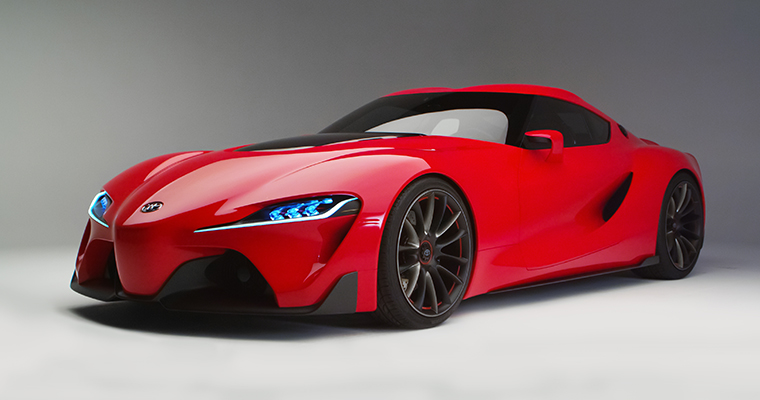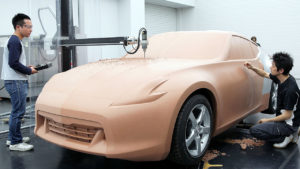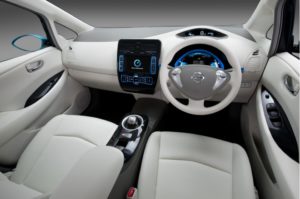
Automotive designers, also known as car designers typically seek to enhance the functionality and aesthetical aspects of a car. From the exterior lights to subtle edges and curves of the body, car designers play a critical role in fusing transportation with art. 
The medium salary for a car designer is $67,130. The expected 10-year growth rate for a career in car design is expected to be 2%. However multiple factors such as the rise of electric, driverless and public vehicles could lead to a drastic change in the type of a design needs in the transportation industries. Some skills and personality traits that make this career a good fit include a passion for art and creativity, an interest in technology and engineer, the ability to think abstractly, logically and analytically and being able collaborate with other towards a common goal and deadline. Internships are highly recommended for anyone considering this pathway. Required degrees include a bachelor’s in transportation or industrial design. Preparing a portfolio of design work, preferably in A2 or A3 format is necessary when applying to schools. However, a digital portfolio on a platform such as a CD-ROM can be accepted for overseas applications. Developing skills in both 2D sketching as well as computer programs such as Adobe PhotoShop, Rhino, Autodesk Alias and SolidWorks are critical.
Some of the work required of people in this field include sketching designs, using computer programs to model these designs in addition to creating prototypes.  Typically, there is a dedicated design team per car model and the tasks carried out by the team are split into three main categories: exterior design, interior design and color/trim design. Graphic design is divided amongst the design team according to the lead designer’s preferences. However this is limited to basic elements such as badges, dials, switches, kick/tread strips, liveries and decals. Exterior design pertains to the proportions, shape and surface of the vehicle. This is achieved through multiple digital and hand drawings. Overtime these drawing become more detailed and have to be approved by certain layers of management. Industrial plasticine (clay) and computer models are created from the drawing. Using the data from these models, a life-sized mock-up of the final design known as the “body in white” is constructed. Running a computer program containing a model of the design, three and five axis CNC machines carve vast amounts of clay. Although there are advanced 3D modeling softwares and power walls (ultra-high resolution displays) to view virtual models, clay is still the most essential tool for evaluating a car’s design.
Typically, there is a dedicated design team per car model and the tasks carried out by the team are split into three main categories: exterior design, interior design and color/trim design. Graphic design is divided amongst the design team according to the lead designer’s preferences. However this is limited to basic elements such as badges, dials, switches, kick/tread strips, liveries and decals. Exterior design pertains to the proportions, shape and surface of the vehicle. This is achieved through multiple digital and hand drawings. Overtime these drawing become more detailed and have to be approved by certain layers of management. Industrial plasticine (clay) and computer models are created from the drawing. Using the data from these models, a life-sized mock-up of the final design known as the “body in white” is constructed. Running a computer program containing a model of the design, three and five axis CNC machines carve vast amounts of clay. Although there are advanced 3D modeling softwares and power walls (ultra-high resolution displays) to view virtual models, clay is still the most essential tool for evaluating a car’s design.
Interior design is concerned with the internal proportions, shape, placement and surfaces of the seats, door, instrument panel, headliner and other interior aspect of the vehicle.  It is this stage of the car design process that there is a heavy emphasis on ergonomics (efficiency) and passenger comfort. Just like exterior design, sketches, digital models and clay models are required to achieve a desire result.
It is this stage of the car design process that there is a heavy emphasis on ergonomics (efficiency) and passenger comfort. Just like exterior design, sketches, digital models and clay models are required to achieve a desire result.
Color and trim designers participate in the research, design and development of all the necessary colors and materials for both the exterior and the interior of the vehicle. Some of these items include paints, leather, grains, carpet, wood trim, fabric prints, plastics, chrome embellishment and etc. Color, pattern, texture and contrast must be handled carefully in order to provide the car with unique features that stand out from the competition. To achieve this designers must work closely with exterior and interior designers. Trend boards are compiled based on research on global trends for projects two to three model years in the future. These boards allow for the designers to be updated on design influences which they can translate to themes and concepts which are eventually refined and tested on car models.
Car design can be an extremely rewarding yet challenging career path. Today, there are nearly a billion cars on the road, each with a unique design team that brought them into existence. With a machine as complex as a car, car designers are a priceless asset to to the automotive industries. Their creative mindset coupled with logical reason makes for not only a special vehicle but a great career.




